Pad Thai Noodles
Pad Thai Noodles is a classic Thai noodle dish that is well-loved beyond the borders of Thailand. Tossed in a sweet, sour, savory, spicy sauce, these rice noodles are cooked under super high heat and bursting with flavors that will send your tastebuds on a wild adventure. So…buckle your seatbelts!
I am SO EXCITED to share this recipe with you for a few reasons because I do love Pad Thai Noodles with all my heart.
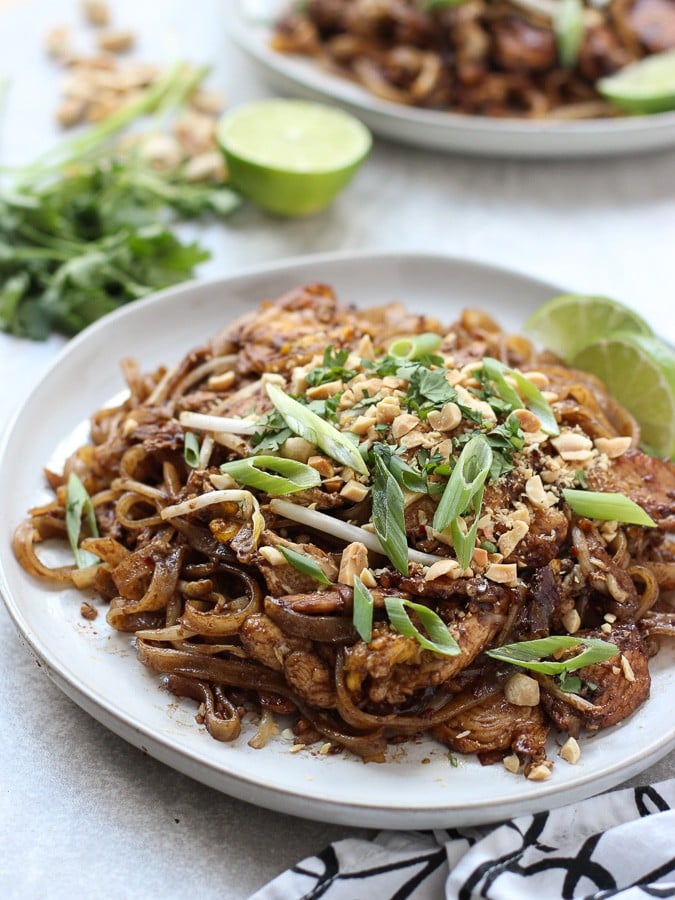
Pad Thai has become a popular and kinda hip noodle dish in the last couple of years, but it is way more than just a cool kid on the block. SO MUCH MORE.
I will be failing Pad Thai big time if I do not talk about the complexity and uniqueness in its flavors. And when I say complex, I don’t mean a lot of ingredients. A good Pad Thai is bursting with amazing flavors and textures, and it is a delicate balancing act of the sweet, savory and sour.
The Pad Thai sauce brings about these flavors, and it is made out of brown sugar (traditionally, palm sugar is used), fish sauce and tamarind concentrate (traditionally, fresh tamarind is used). Brown sugar will bring about the sweet, fish sauce the salty, and tamarind concentrate the sour. The balancing of the flavors comes from using the perfect amount these three ingredients.
Let’s talk a little bit about some of these ingredients. Fish sauce is a key ingredient in most Thai and Vietnamese dishes. It is also incredibly salty, and a little goes a very long way. Good news is it can be found in most mainstream grocery stores today.
As for Tamarind concentrate, they can be harder to find, even in Asian grocery stores. Luckily Amazon carries a version I love (click here for the affiliate link) and is very affordable. This is my go-to tamarind concentrate.
As I experimented with different tamarind concentrates/pastes, I also learned that they can differ a lot in terms of consistency and taste. If you are using another brand, the amount needed can vary slightly, and you might have to experiment with it to get to your desired flavor palette.
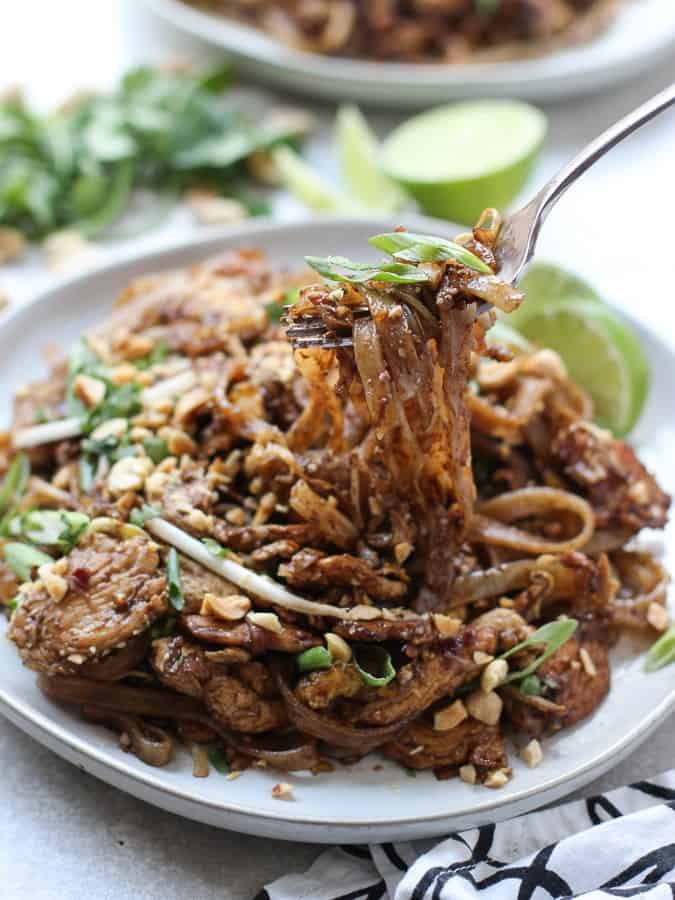
The noodles used in Pad Thai is thin rice noodles, and they typically comes dry, and look like noodle sticks. Sometimes called Pad Thai Noodles, I have seen these dry rice noodles sold in regular grocery stores in the U.S.
Soak the rice noodles in warm/hot water for 30-45 minutes, or according to package instructions. The goal is to soften and separate noodles (so they don’t clump together).
You can find refrigerated (non-dry) noodles as well, but typically most stores carry dry noodles. If using wet noodles, you will have to soak them prior as well.
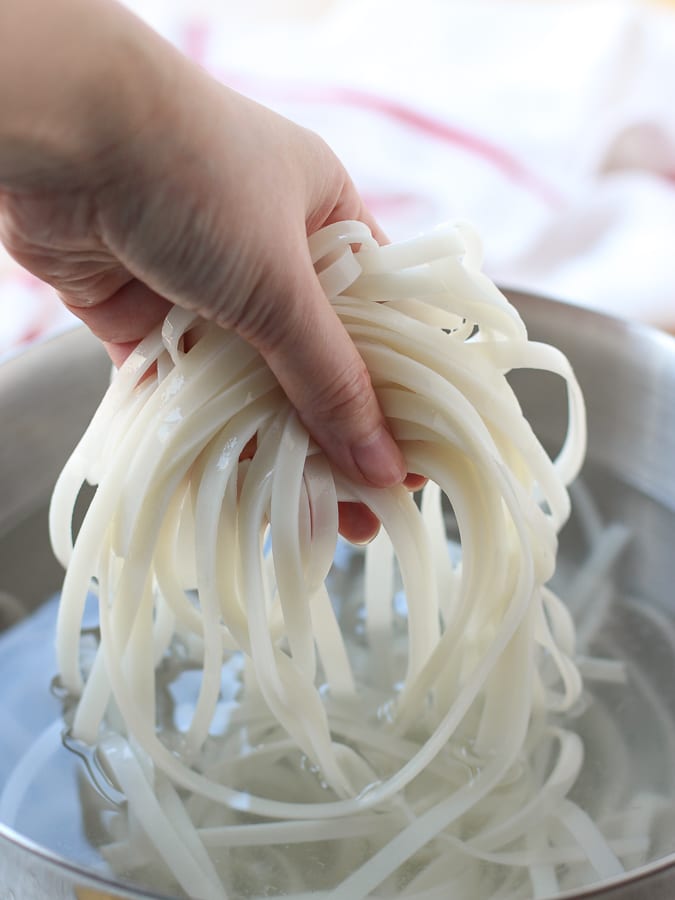
Just like any stir fry dishes, prep the ingredients before hand and lay it next to the stove so that it is within arm’s reach.
We are cooking under super high heat, and once we start stir-frying, the process goes fast. You want to be able to reach your ingredients quickly.
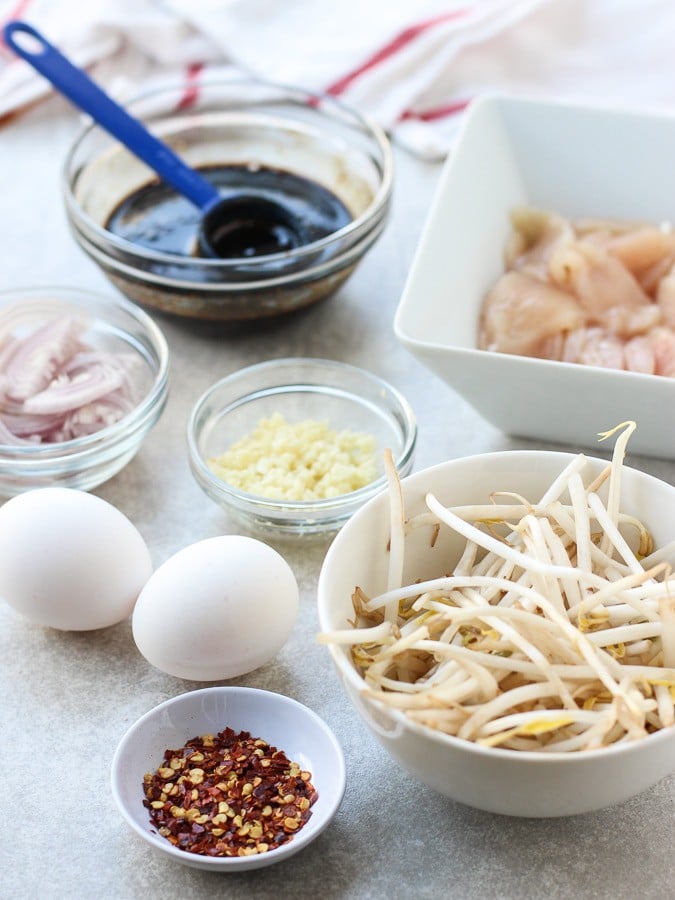
This recipe is written for two servings, and when stir frying these noodles, I recommend cooking one serving at a time. This is because you want to be able to move the ingredients around when you cook them. This is crucial for ensuring the Pad Thai Noodles are cooked evenly.
A wok is highly recommended for making this dish. If you do not have a wok, I recommend a large skillet (so you can move it around) that can withstand high heat. Preferably non-stick as those rice noodles do have a tendency to stick to the pan. You can use more vegetable oil to avoid sticking if necessary.
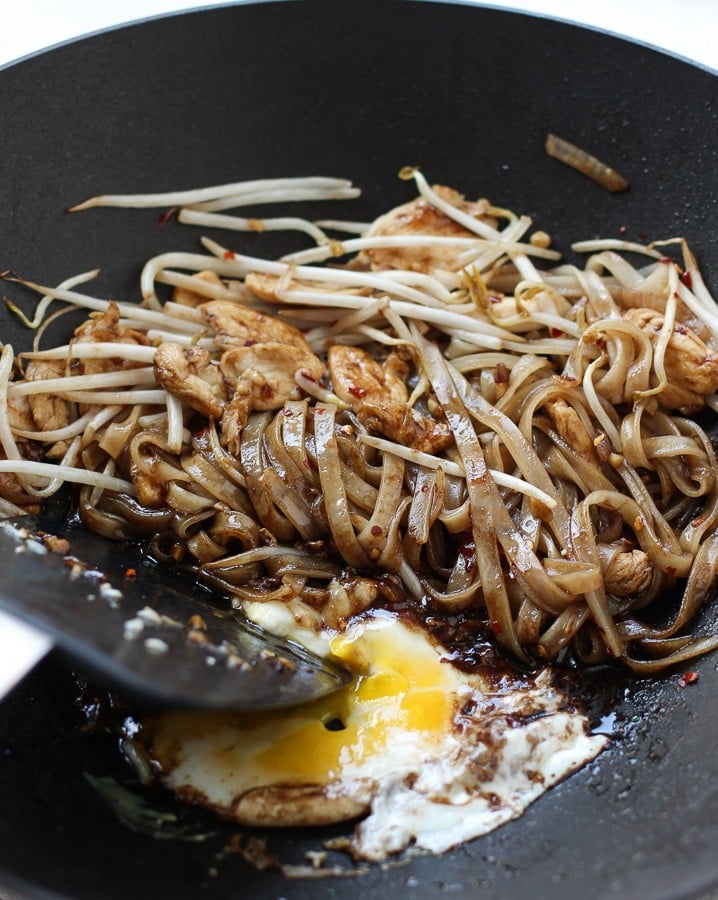
As I mentioned early, the stir-frying process goes fast. I have the details on what goes in for approximately how long in the recipe card below, but keep in mind that you will most likely be standing next to the stove, and stirring the wok most of the time, when you make this dish.
Remember to not overcook the dish! Rice noodles get soggy if overcooked, and can be tough to chew if undercooked. We throw the bean sprouts in at the end because you don’t want to get them soggy by cooking them too early in the process.
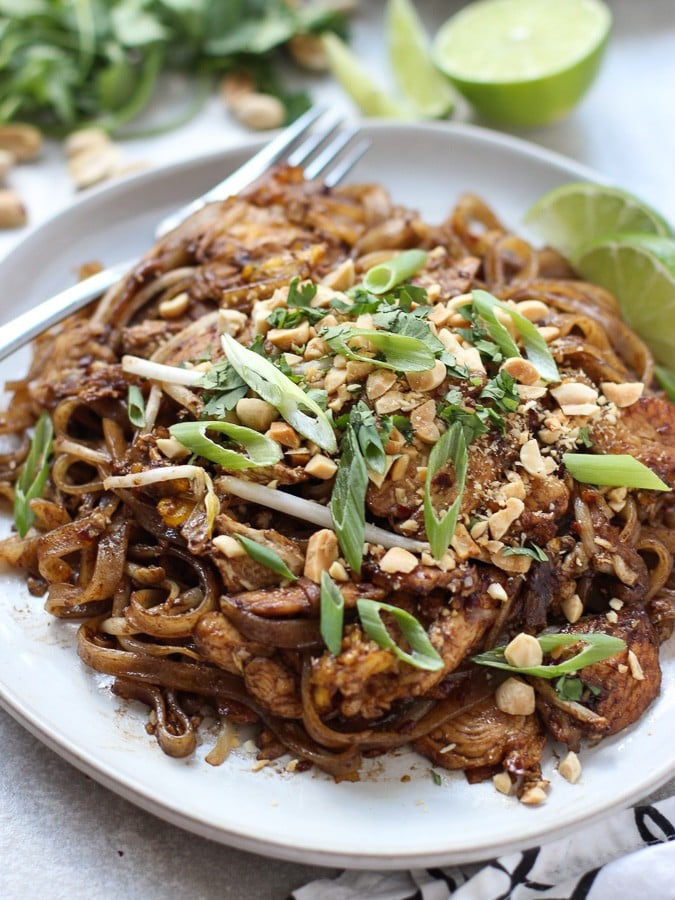
Stir frying is an art, not a science. There are a lot of external factors, such as how hot your wok gets, how frequently you were able to move your ingredients around, that will dictate how the dish turns out.
It reminds me a lot of bread-making, where there is an art to it, and external factors can make the end product slightly different each time.
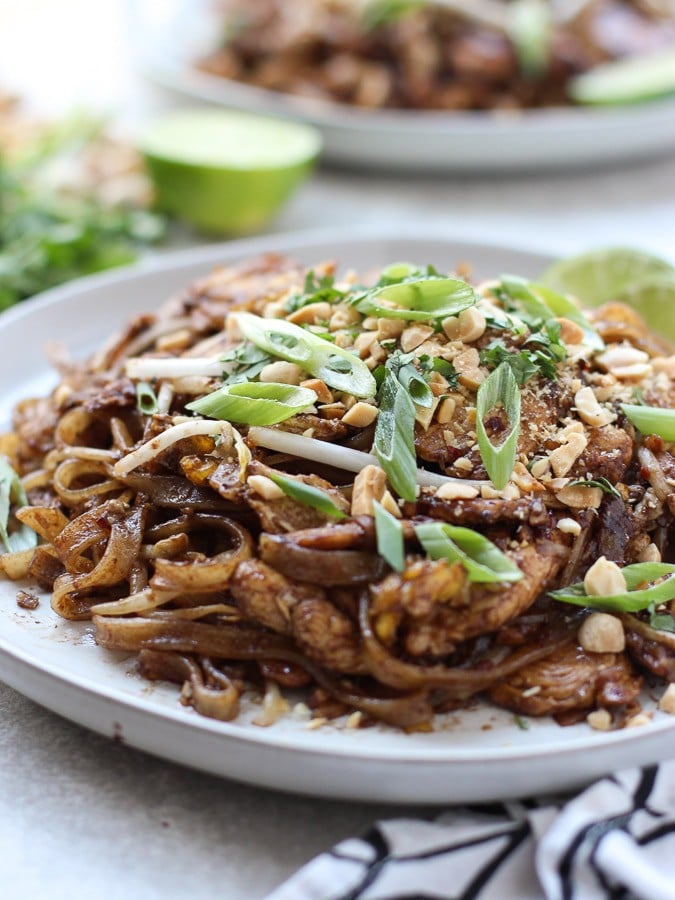
At the end prior to serving, remember to garnish with green onions, cilantro and chopped peanuts, and squeeze some lime juice onto it. These garnishes add texture, and the lime add to the sour bite in the noodles and open up the flavors.
Pad Thai Noodles. The most beautiful merger of flavors. The texture queen. The dish that takes yummy to the next level.
And now you get to make it all at home.
Friends, let’s indulge together.
DID YOU ENJOY THIS RECIPE? Please comment below and give us a 5-star rating! This will help others find this recipe on Google and Pinterest. We very much appreciate your help! 🤍
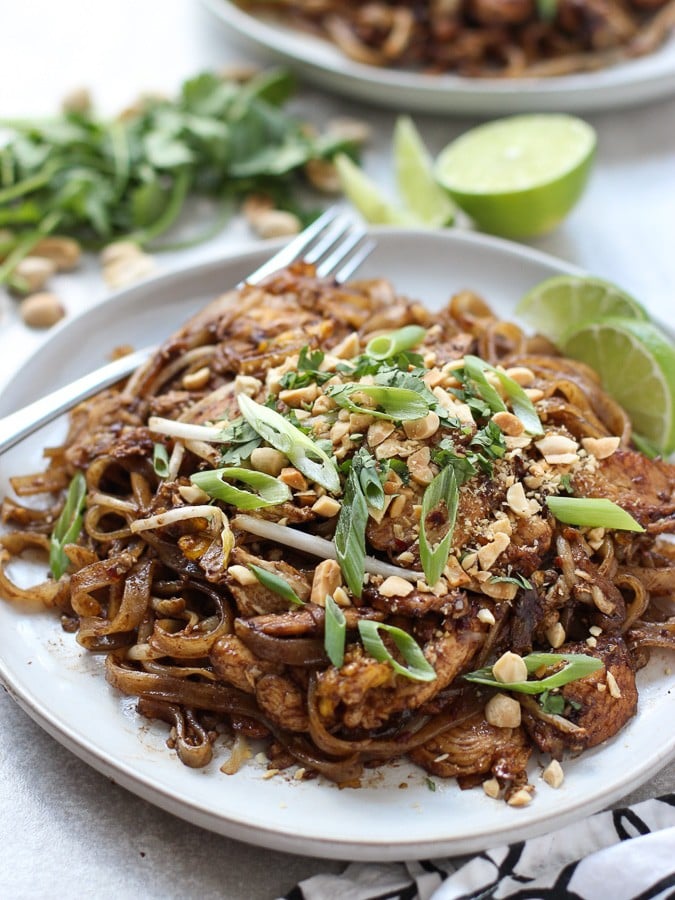
More Delicious Southeast Asian Favorites
- Pad See Ew Noodles
- Vietnamese Egg Rolls
- Malaysian Curry Puff
- Mee Goreng Mamak (Malaysian Fried Noodles)
- Thai Grilled Chicken
- Tom Yum Fried Noodles
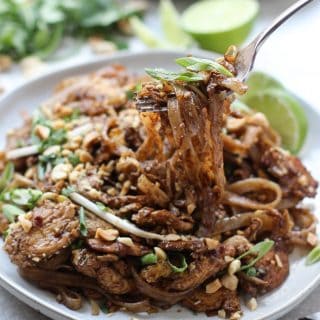
Pad Thai Noodles
Ingredients
- 5-6 oz dry rice noodle stick/ Pad Thai noodles
- 1 1/2 tbsp tamarind concentrate
- 1 1/2 tbsp fish sauce
- 3 tbsp brown sugar
- 2 1/2 tbsp water
- 3 tbsp minced fresh garlic
- 6 tbsp shallots sliced
- 2-3 pieces chicken tenderloins thinly sliced
- 2 tbsp vegetable oil
- 2 tsp red pepper flakes
- 1 cup bean sprouts
- 2 large eggs
Garnish
- 2 tbsp chopped peanuts
- 1 lime cut into wedges
- 1/4 cup green onions sliced
- 2 tbsp cilantro chopped
Instructions
- Soak pad thai / rice noodles in warm/hot water for 30-45 minutes, or according to package instruction. Drain water when soaking is completed.
- Mix together tamarind concentrate, fish sauce, brown sugar and water to create Pad Thai sauce. (Important: Please see notes below)
- Mince garlic and slice shallots, and thinly slice chicken.
- Cook one serving of pad thai at a time. To cook the first serving, add 1 tbsp of vegetable oil into wok and let it heat up under high heat. Once wok and oil is heated, add 1 ½ tbsp. of minced garlic and 3 tbsp of minced shallots. Cook for 30-60 seconds, then add half of the sliced chicken prepared. Cook for a couple of minutes, or until chicken is mostly cooked.
- Add half of the soaked & drained pad thai noodles, cook for a couple of minutes until noodles soften, stirring continuously.
- Add ~3 tbsp of Pad Thai sauce, and 1 tsp of red pepper flakes (add more to make it spicier). Continue to stir.
- Add ½ cup of bean sprouts, then move the noodles to one side of the pan, and crack an egg directly onto wok, break the egg yolk, and then cover the slightly raw egg with all the noodles. Mix everything together for a minute or so. Remove from heat.
- Garnish with crushed peanuts, green onions, cilantro and lime.
- Repeat Step 4-8 for the second serving. There might be a little bit of leftover Pad Thai sauce.
- Serve and enjoy!
Video
Notes
- When creating the Pad Thai sauce, it is all about balancing the sour (tamarind paste), the salty (fish sauce) and the sweet (brown sugar). Play around with the measurements of each ingredient to get the balance you like. Also, add more or less water as needed. If you are using a different brand of tamarind paste that is less concentrate, you may not need water at all. It really comes down to a bit of a trial and error on this one.
- The whole stir-frying process (once you add the garlic and shallots in the wok) goes really quickly, and requires you to move the items around in the wok frequently. Rice noodles also have a tendency to stick to the wok or to each other once it is cooked if it is not moved around when cooking.
- Use a wok but if you don’t have a wok, a non-stick frying pan/skillet that is medium/large in size (so items can be moved around) is preferred.
- Add more vegetable oil if you are not using non-stick appliances.


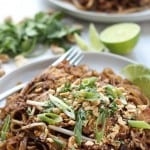
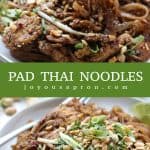
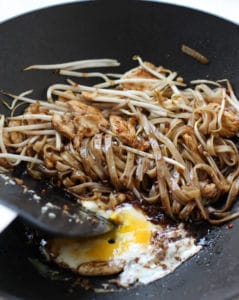
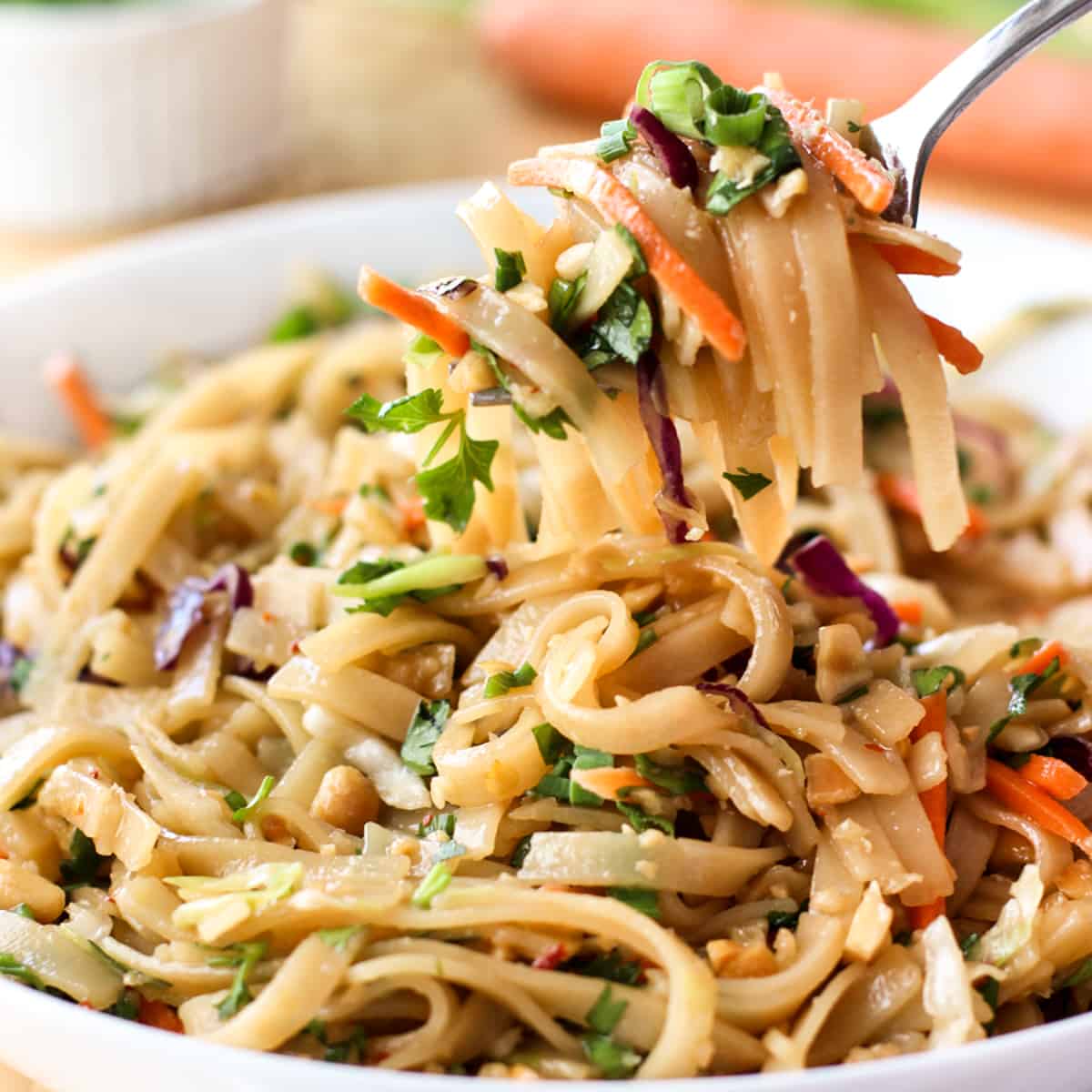
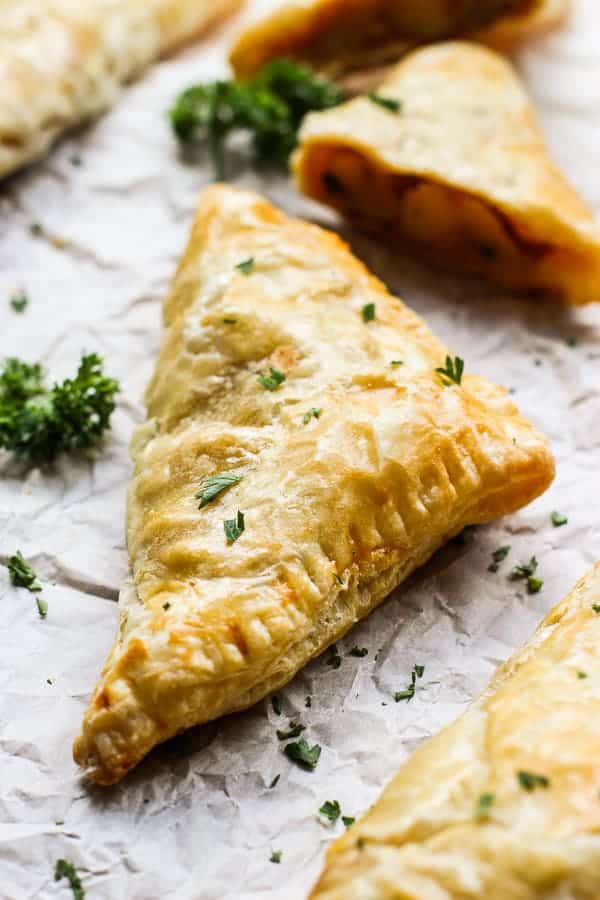
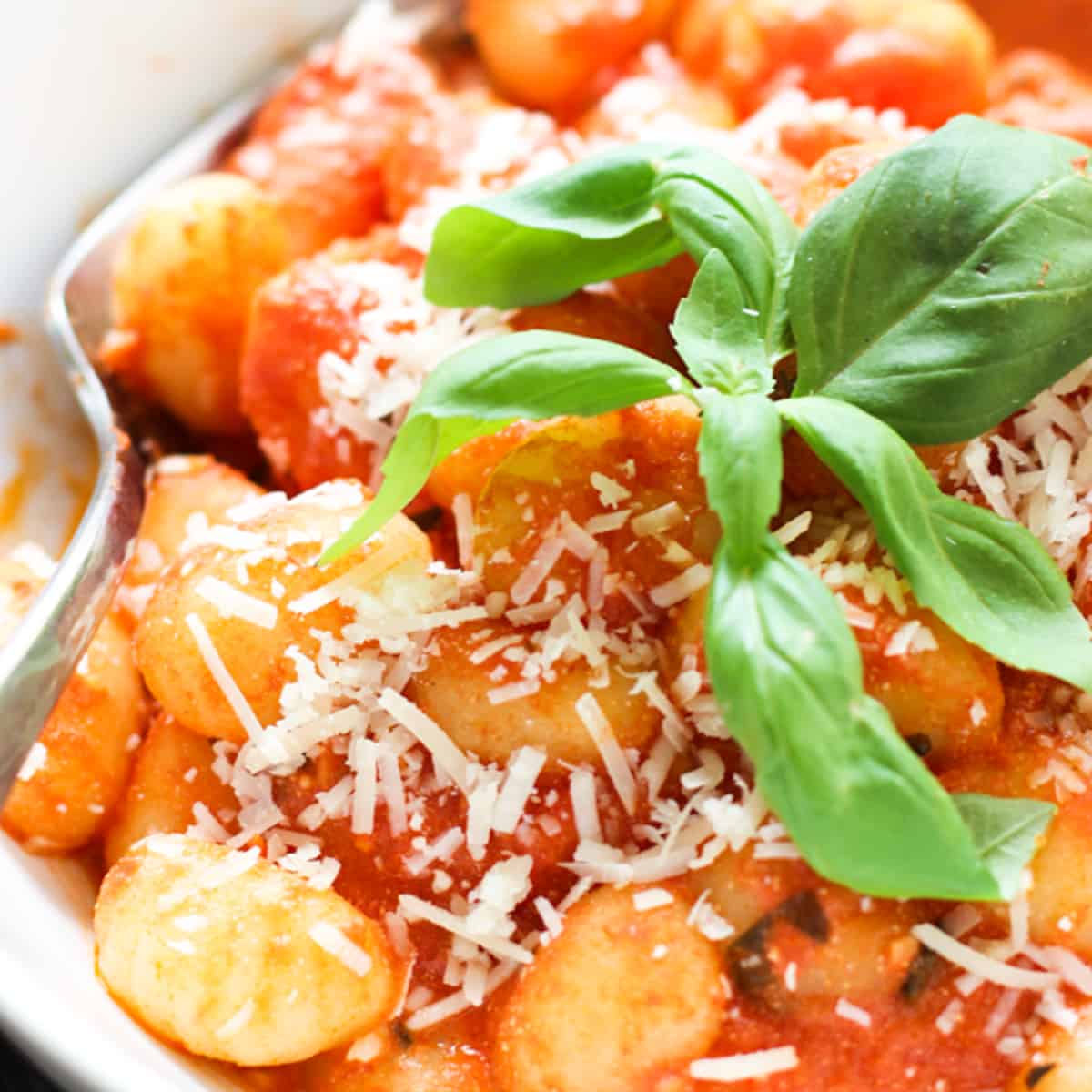
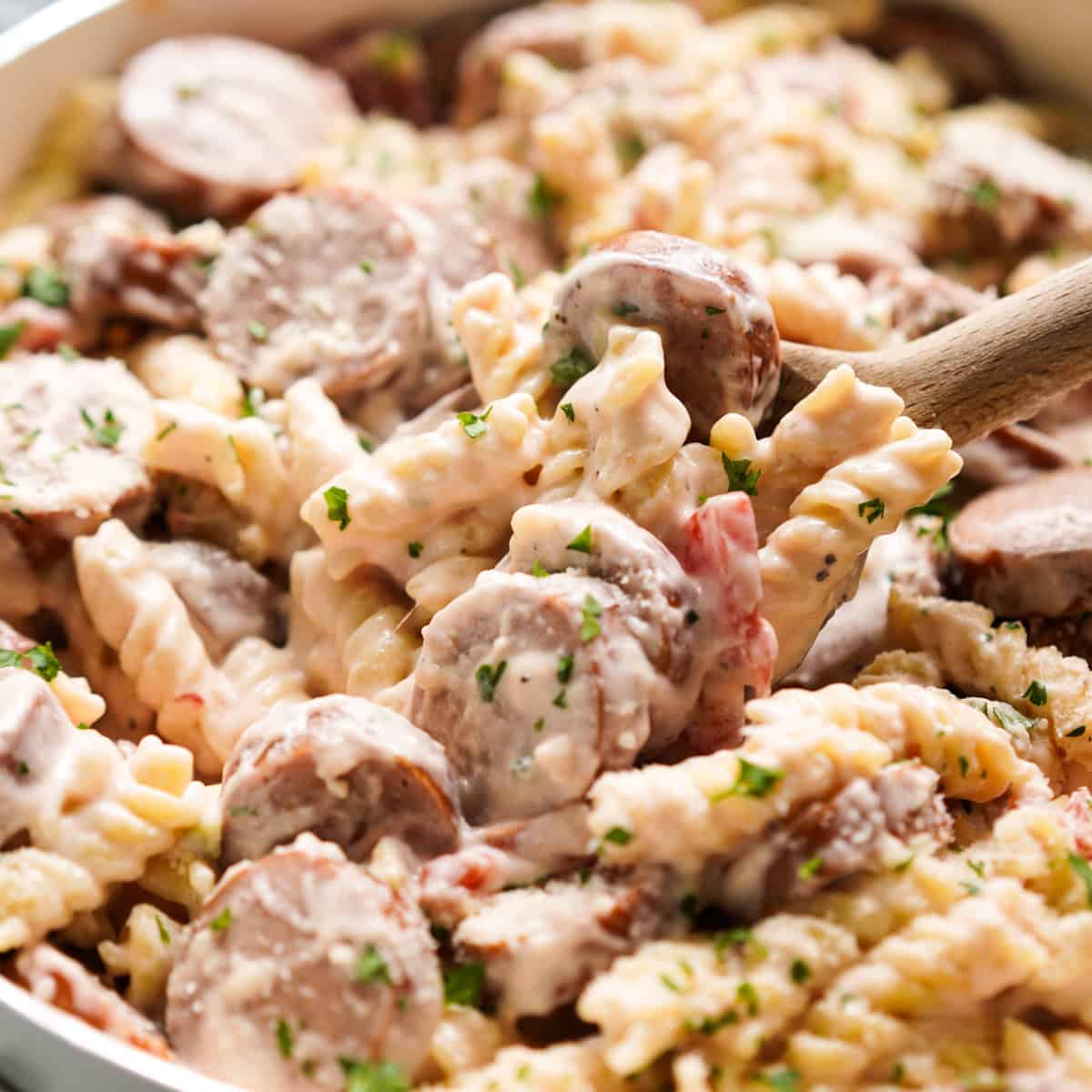
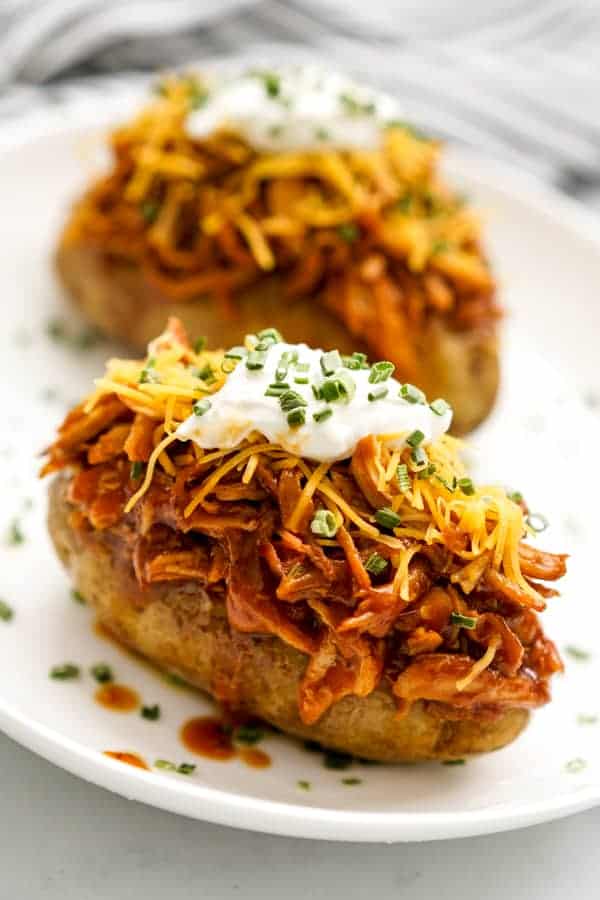
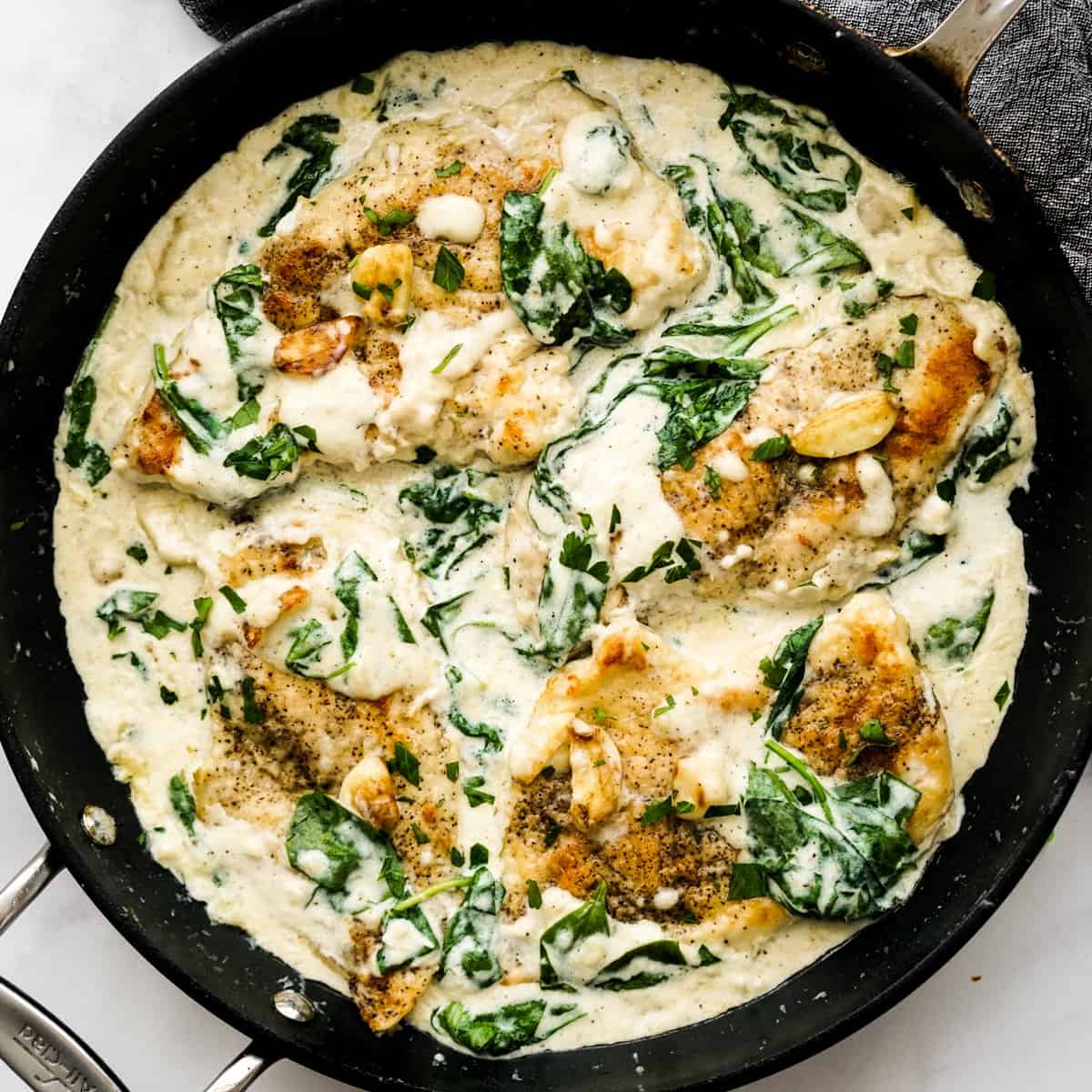

I LOVE THIS RECIPE. I am super picky when it comes to pad thai, and this recipe is so easy AND seriously hits the spot. It’s warm, comforting, and has really full flavor…but is also light enough that I’ve totally eaten 3 helpings of it all at once. Do yourself a favor and make this recipe!!
Yay yay yay!! I am SO GLAD you enjoyed it, Katie! 🙂
Very well explained!! Can’t wait to try as Pad Thai is my favorite!!
I can’t wait to hear what you think! Enjoy!